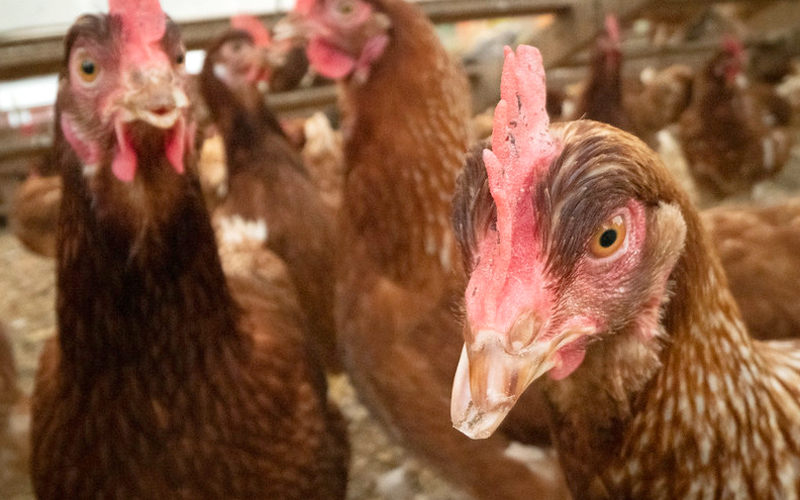FOR IMMEDIATE RELEASE:
Contact: Shelton Dodson
Director of Public Affairs, New Mexico Department of Agriculture
sdodson@nmda.nmsu.edu
Office: 575-646-2804
Cell: 575-339-5011
April 16, 2024
Highly Pathogenic Avian Influenza detected at Eastern New Mexico poultry facility
Federal, state authorities working to prevent spread to backyard flocks
ROOSEVELT COUNTY, N.M. – The New Mexico Livestock Board (NMLB), in conjunction with the U.S. Department of Agriculture’s (USDA) National Veterinary Services Laboratories (NVSL), have confirmed the presence of highly pathogenic avian influenza (HPAI) at a poultry facility in eastern New Mexico.
Initial testing of the facility was performed on April 10 for the presence of HPAI. Further testing by NVSL was needed to confirm the presence of HPAI at the facility. All birds on the infected premises will be depopulated.
Highly pathogenic avian influenza occurs naturally in wild birds and is most often spread during the fall and spring migratory seasons. The virus is often fatal to domestic poultry but, according to the Centers for Disease Control and Prevention (CDC), poses a low threat to human exposure.

State-level authorities are working to inspect backyard flocks on properties near the affected poultry facility. Roosevelt County residents who raise poultry are encouraged to observe their flocks and look for the following HPAI warning signs:
- Sudden death without any prior symptoms of illness;
- lack of energy and appetite;
- a drop in egg production or soft-shelled, misshapen eggs;
- swelling of the eyelids, comb, wattles, and shanks;
- purple discoloration of the wattles, comb, and legs;
- gasping for air (difficulty breathing);
- nasal discharge, coughing, sneezing;
- twisting of the head and neck (torticollis);
- stumbling or falling down;
- diarrhea
To learn how to better protect your poultry from HPAI, view guidelines from USDA’s Animal & Plant Health Inspection Service (APHIS).
Updated information will be issued by USDA and federal and state partners as additional testing results are received.
###
Find us at:
NMDeptAg.nmsu.edu
Facebook, Twitter and Instagram: @NMDeptAg
YouTube: NMDeptAg
LinkedIn: New Mexico Department of Agriculture
